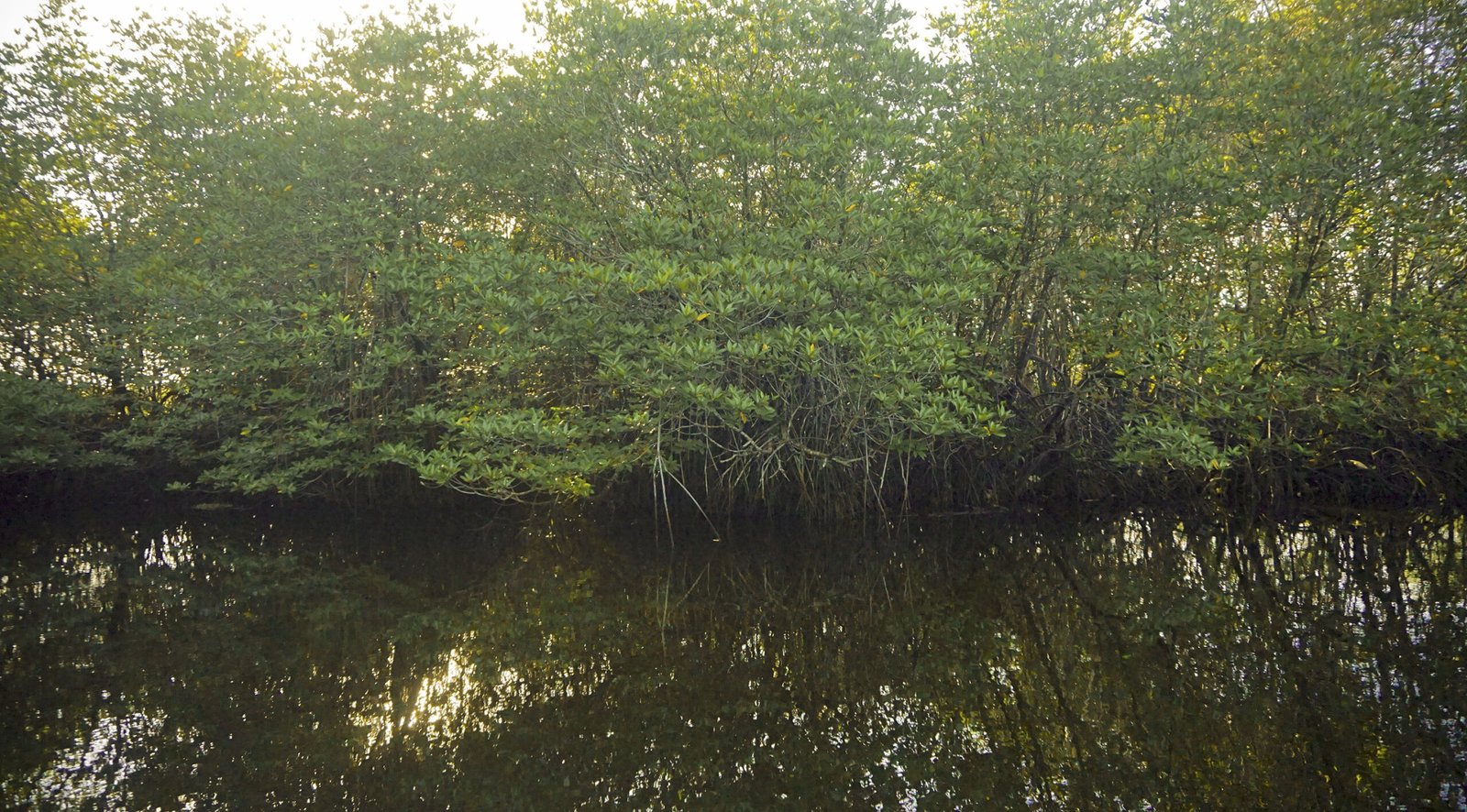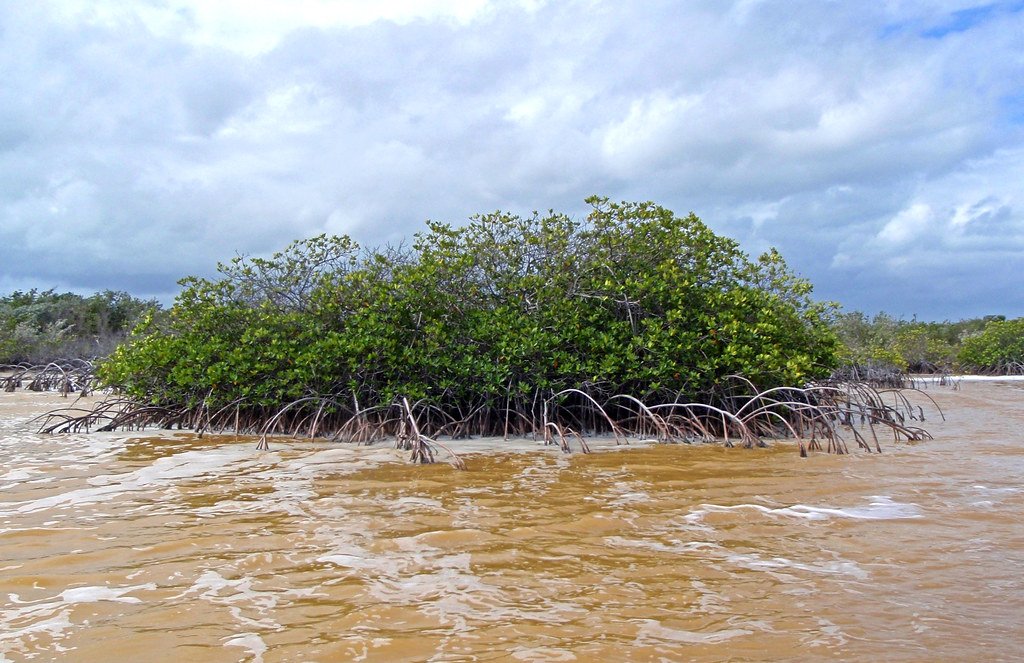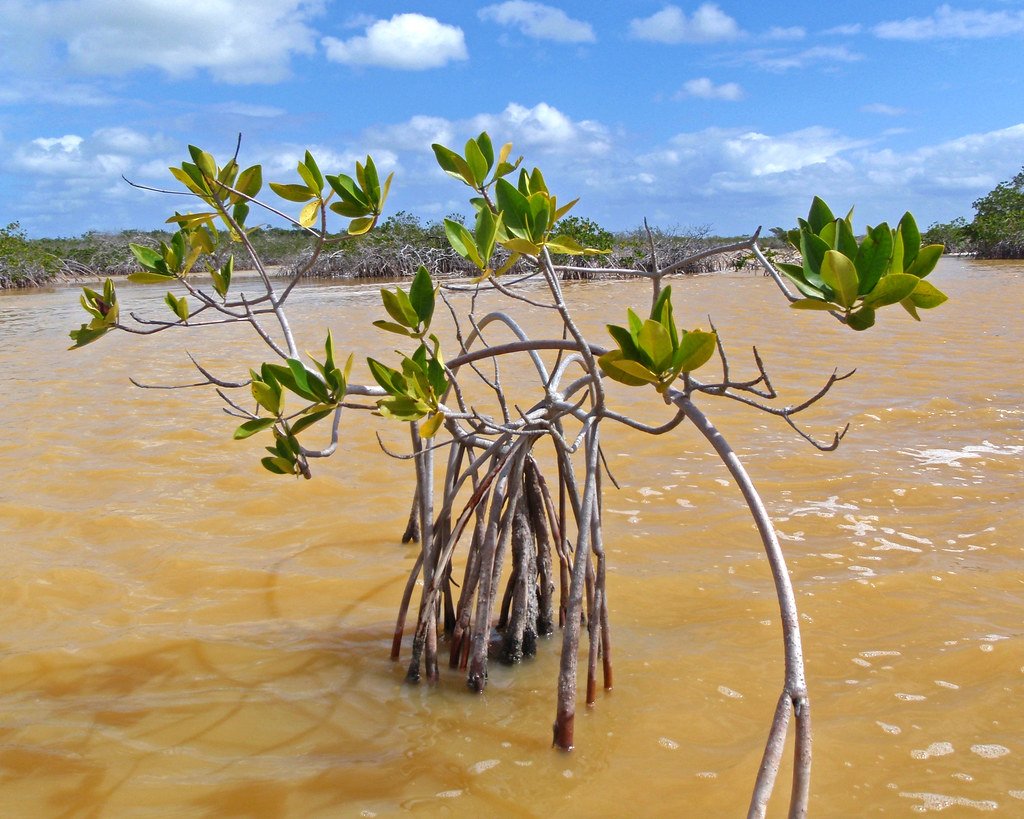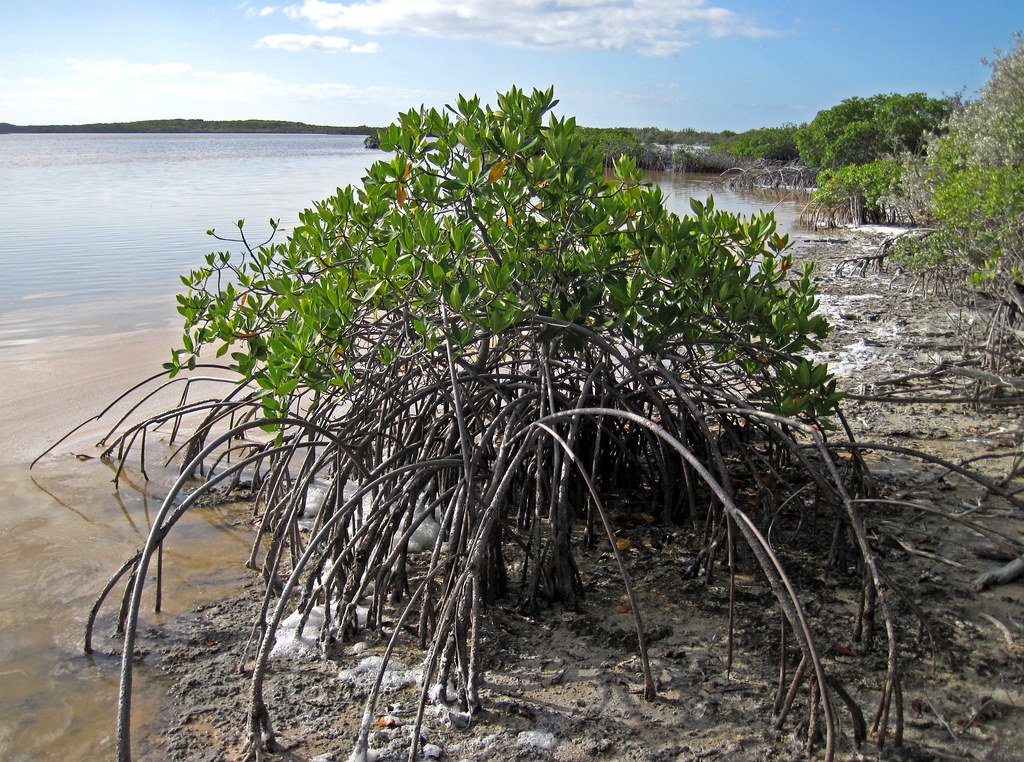Beneath Singapore’s towering skyline and gleaming waterfront, a hidden world thrives in the shadows of ancient mangrove roots. While tourists marvel at the city-state’s architectural wonders, microscopic warriors wage an invisible battle against rising seas and climate change. These tiny organisms, smaller than the period at the end of this sentence, are quietly orchestrating one of nature’s most sophisticated defense systems. They transform poison into nutrients, build underwater cities from nothing, and create protective barriers that have shielded Singapore’s shores for millennia. What if I told you that Singapore’s survival might depend more on these invisible allies than on any human-engineered sea wall?
The Microscopic Metropolis Hidden in Mangrove Mud

Imagine a bustling city where millions of residents work around the clock, never sleeping, never stopping. This isn’t science fiction – it’s the reality of Singapore’s mangrove sediments, where bacterial communities create complex urban-like structures.
Every teaspoon of mangrove mud contains more microorganisms than there are people on Earth. These bacterial neighborhoods form intricate networks, with different species occupying specific roles like specialized workers in a factory. Some bacteria process sulfur compounds, others break down organic matter, and many produce sticky substances that literally glue the coastal sediments together.
The diversity is staggering – scientists have identified over 10,000 different bacterial species in Singapore’s mangroves alone. Each species has evolved unique survival strategies, from producing antibiotics to forming protective biofilms that resist harsh saltwater conditions.
Sulfur-Eating Bacteria: Nature’s Toxic Waste Cleaners

Deep in the oxygen-starved mangrove mud, sulfur-reducing bacteria perform one of Earth’s most crucial chemical transformations. These microscopic chemists take deadly hydrogen sulfide – the compound that gives rotten eggs their smell – and convert it into harmless sulfur compounds.
Without these bacterial janitors, mangrove ecosystems would become toxic wastelands. The bacteria essentially eat poison for breakfast, using the chemical energy to fuel their own growth while detoxifying the environment for other organisms.
This process happens on such a massive scale that it influences the entire coastal chemistry. The bacteria create chemical gradients that support complex food webs, from tiny invertebrates to the fish that eventually reach Singapore’s dinner tables.
The Root Zone Revolution: Where Bacteria Meet Tree Roots

The rhizosphere – the zone around mangrove roots – represents one of Earth’s most intense biological battlegrounds. Here, bacteria engage in chemical warfare, territorial disputes, and unlikely partnerships that would make any soap opera jealous.
Mangrove roots release up to 30% of their photosynthetic energy directly into the surrounding sediment, creating a bacterial feeding frenzy. This root exudate contains sugars, amino acids, and organic acids that fuel explosive bacterial growth. The competition is so fierce that bacteria have evolved sophisticated chemical weapons – antibiotics – to eliminate rivals.
Some bacteria have learned to cooperate with the mangrove trees themselves, forming symbiotic relationships that benefit both partners. These bacterial allies help trees absorb nutrients more efficiently while receiving shelter and food in return.
Salt-Tolerant Superbugs: Masters of Extreme Environments

Singapore’s mangroves experience dramatic salinity changes with every tide, creating conditions that would kill most life forms. Yet halophilic bacteria thrive in these extreme environments, having evolved remarkable adaptations to survive salt concentrations that would pickle ordinary organisms.
These salt-loving bacteria produce specialized proteins and accumulate compatible solutes that protect their cellular machinery from salt damage. Some species can survive in water ten times saltier than seawater, making them among Earth’s most resilient organisms.
Their survival strategies include producing protective pigments that give some mangrove sediments their distinctive colors, from deep purples to bright oranges. These pigments aren’t just for show – they protect bacterial DNA from harmful UV radiation and oxidative stress.
Biofilm Architects: Building Underwater Cities

Bacterial biofilms in mangrove sediments function like microscopic construction crews, building three-dimensional structures that stabilize entire coastlines. These bacterial cities consist of multiple species working together, each contributing different skills to the collective effort.
The bacteria secrete sticky polymers that act like biological concrete, binding sediment particles together into stable structures. These biofilms can be so strong that they prevent erosion even during violent storms, effectively serving as living armor for Singapore’s shores.
Within these biofilms, bacteria create sophisticated communication networks using chemical signals. They coordinate their activities, share resources, and even sacrifice individual cells for the greater good of the community.
The Carbon Capture Champions

While politicians debate carbon pricing, mangrove bacteria have been quietly sequestering carbon for millions of years. These microscopic carbon farmers capture atmospheric CO2 and lock it away in sediments, creating one of Earth’s most effective carbon storage systems.
The bacteria work in partnership with mangrove trees, processing the organic matter that falls from above and converting it into stable carbon compounds. This biological carbon pump removes approximately 25 million tons of CO2 from the atmosphere annually in tropical mangrove systems worldwide.
In Singapore’s compact mangrove areas, the carbon sequestration rate per square meter exceeds that of tropical rainforests. The bacteria essentially turn the coastal sediments into carbon vaults that can store CO2 for centuries or even millennia.
Nitrogen Fixers: Fertilizer Factories in the Mud

Nitrogen-fixing bacteria in Singapore’s mangroves operate like underwater fertilizer factories, converting atmospheric nitrogen gas into ammonia that plants can use. This process requires enormous amounts of energy and specialized enzymes that function only in oxygen-free environments.
These bacterial alchemists possess the enzyme nitrogenase, which can break the incredibly strong triple bond in nitrogen gas. The process is so energy-intensive that the bacteria must consume large amounts of organic matter to fuel the reaction, making them crucial links in the mangrove food web.
The nitrogen they produce supports the entire mangrove ecosystem, from microscopic algae to towering trees. Without these bacterial fertilizer factories, Singapore’s mangroves would be barren wastelands unable to support the rich biodiversity they’re famous for.
Methane Munchers: Controlling Greenhouse Gas Emissions

Methanotrophic bacteria in mangrove sediments serve as nature’s methane control system, consuming this potent greenhouse gas before it can escape into the atmosphere. These specialized bacteria use methane as their primary energy source, effectively eating one of climate change’s most dangerous contributors.
The bacteria form distinct layers in the sediment, positioned at the exact depth where methane and oxygen meet. They act like a biological filter, preventing up to 90% of the methane produced in deeper sediments from reaching the surface.
This bacterial methane consumption is so efficient that it significantly reduces Singapore’s overall greenhouse gas emissions. The bacteria essentially provide free climate change mitigation services worth millions of dollars annually.
The Antibiotic Treasure Trove

Singapore’s mangrove bacteria represent an untapped pharmaceutical goldmine, producing novel antibiotics and bioactive compounds that could revolutionize medicine. The intense competition in mangrove sediments has driven bacteria to evolve sophisticated chemical weapons that show promise against drug-resistant pathogens.
Researchers have already identified dozens of new antibiotic compounds from mangrove bacteria, including some that can kill MRSA and other superbugs. These bacterial pharmacists have been perfecting their chemical recipes for millions of years, creating compounds that human chemists never imagined.
The diversity of these bacterial medicines reflects the extreme conditions in mangrove environments. Bacteria that survive in such harsh conditions often produce correspondingly powerful therapeutic compounds.
Storm Surge Defenders: Living Breakwaters

When typhoons and storm surges threaten Singapore’s coastline, bacterial communities spring into action as living breakwaters. The biofilms they create can dissipate wave energy more effectively than many artificial structures, protecting inland areas from flooding and erosion.
These bacterial barriers work by creating rough surfaces that increase friction and break up wave energy. The sticky biofilms also trap sediment particles, gradually building up the seafloor and creating natural berms that further protect the shore.
During major storm events, these bacterial defenses can mean the difference between minor flooding and catastrophic damage. The bacteria essentially provide free coastal protection services that would cost billions of dollars to replicate artificially.
Temperature Regulation: Bacterial Air Conditioning

Mangrove bacteria influence local temperature patterns through their metabolic activities and heat-absorbing biofilms. Different bacterial communities generate varying amounts of heat through their chemical processes, creating complex temperature gradients in the sediment.
Some bacteria produce heat-shock proteins that help them survive extreme temperature fluctuations, while others modify their membrane composition to remain functional in changing thermal conditions. These adaptations allow bacterial communities to maintain ecosystem functions even as global temperatures rise.
The bacteria also influence water temperature through their effects on sediment color and heat absorption. Dark bacterial mats absorb more solar energy, while light-colored biofilms reflect heat, creating micro-climates that affect the entire ecosystem.
The Plastic Degraders: Solving Singapore’s Pollution Problem

Recent discoveries have revealed that some mangrove bacteria possess the remarkable ability to break down plastic waste, offering hope for addressing Singapore’s marine pollution challenges. These bacterial recyclers have evolved enzymes that can cleave the chemical bonds in common plastics, slowly converting them into harmless compounds.
The bacteria work slowly but relentlessly, breaking down plastic debris that washes into mangrove areas. While the process takes months or years, it represents a natural solution to one of humanity’s most persistent environmental problems.
Scientists are now studying these bacterial plastic-eaters to understand how they might be harnessed for large-scale waste management. The bacteria could potentially be cultivated and deployed to clean up plastic pollution in Singapore’s waters.
Viral Hunters: Bacteriophages in the Mangrove Matrix

Bacteriophages – viruses that infect bacteria – play a crucial role in controlling bacterial populations in Singapore’s mangroves. These microscopic predators act like biological population control agents, preventing any single bacterial species from dominating the ecosystem.
The viral hunters are incredibly specific, with each phage species typically infecting only one or a few bacterial species. This specificity maintains bacterial diversity by preventing competitive exclusion and ensuring that all ecological niches remain filled.
The constant evolutionary arms race between bacteria and their viral predators drives innovation in both groups. Bacteria evolve new defense mechanisms while viruses develop more sophisticated attack strategies, creating a dynamic system that promotes overall ecosystem resilience.
The Probiotic Powerhouse: Health Benefits Beyond the Mangrove

Mangrove bacteria produce a remarkable array of probiotic compounds that benefit human health, from immune system boosters to digestive aids. These bacterial alchemists have perfected the art of biochemical synthesis through millions of years of evolution.
Some mangrove bacteria produce vitamins, including B12 and folate, that are essential for human health. Others create prebiotic compounds that support beneficial gut bacteria, potentially offering new approaches to treating digestive disorders and immune system dysfunction.
The extreme conditions in mangrove environments have selected for bacteria with exceptional stress tolerance, making them ideal candidates for probiotic applications. These hardy bacteria can survive the harsh conditions of the human digestive system better than many commercial probiotics.
Communication Networks: Bacterial Internet

Bacterial communities in Singapore’s mangroves operate sophisticated communication networks that would impress any telecommunications engineer. Through a process called quorum sensing, bacteria release and detect chemical signals that coordinate group behavior across vast distances.
These bacterial messages can travel through water, sediment, and even air, allowing communities to respond collectively to environmental changes. The signals control everything from biofilm formation to antibiotic production, creating a microbial internet that spans entire ecosystems.
The communication system is so advanced that bacteria can distinguish between messages from their own species and those from other organisms. They can even eavesdrop on conversations between different bacterial species, using the information to their advantage in competitive situations.
Future Guardians: Adapting to Climate Change

As climate change accelerates, Singapore’s mangrove bacteria are already adapting to new conditions, developing novel strategies to maintain ecosystem functions under increasing stress. These microscopic innovators represent hope for ecosystem resilience in an uncertain future.
Rising temperatures and changing precipitation patterns are selecting for heat-tolerant and drought-resistant bacterial strains. The rapid generation times of bacteria allow them to evolve much faster than larger organisms, potentially maintaining ecosystem services even as conditions change.
Scientists are documenting these bacterial adaptations to understand how mangrove ecosystems might respond to future climate scenarios. The bacteria’s evolutionary responses could provide early warning signs of ecosystem stress or reveal new strategies for climate adaptation.
The Economic Value of Invisible Workers

The ecosystem services provided by mangrove bacteria generate billions of dollars in economic value annually, from coastal protection to carbon sequestration to pharmaceutical discoveries. These invisible workers provide services that would be impossibly expensive to replicate artificially.
Coastal protection alone provided by bacterial biofilms is worth millions of dollars per year in avoided storm damage. The carbon sequestration services could be valued in the hundreds of millions under global carbon pricing schemes.
The pharmaceutical potential of mangrove bacteria represents an untapped resource that could generate enormous economic returns. Each new antibiotic or bioactive compound discovered could be worth hundreds of millions of dollars in development and licensing fees.
Singapore’s mangrove bacteria represent one of nature’s most sophisticated and underappreciated defense systems. These microscopic allies work tirelessly to protect coastlines, clean pollution, sequester carbon, and maintain ecosystem health. Their invisible contributions keep Singapore’s shores resilient against rising seas and climate change while providing invaluable services that no human technology can match. As we face an uncertain environmental future, these tiny creatures offer both hope and practical solutions for maintaining coastal resilience. The question isn’t whether we can afford to protect these bacterial communities – it’s whether we can afford not to. What other invisible allies might we be overlooking in our rush to engineer technological solutions to environmental problems?



